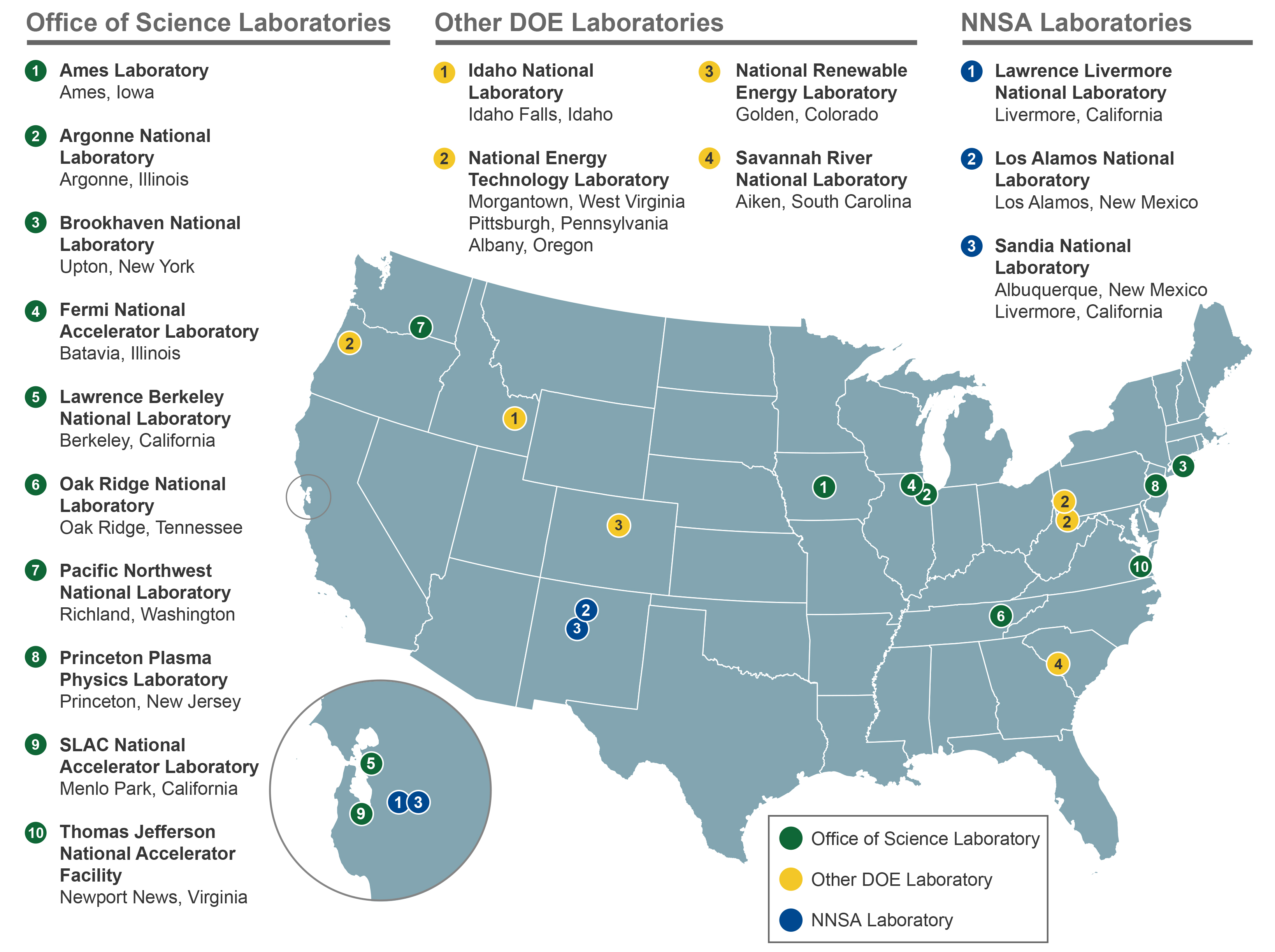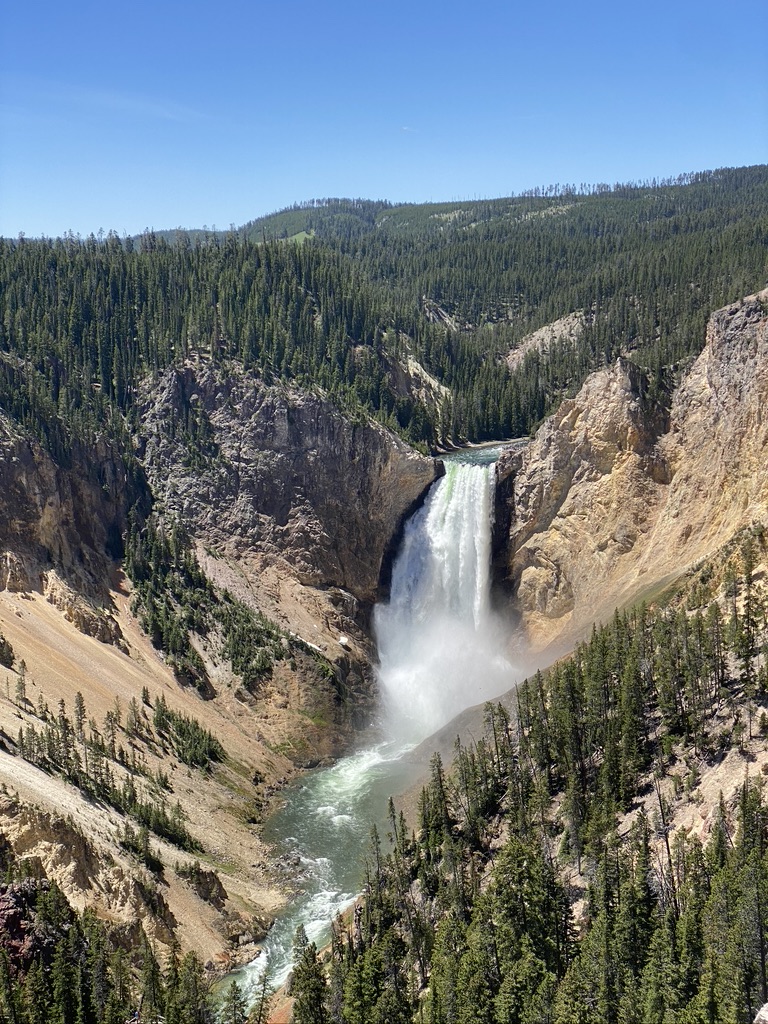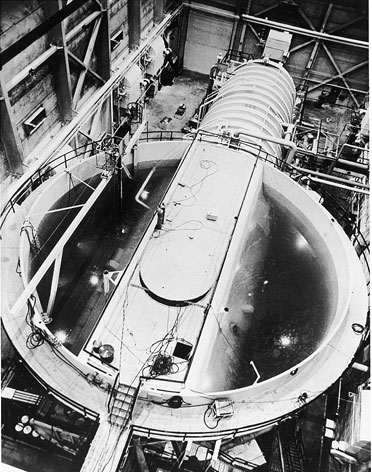|
ARMF-I
Advanced Reactivity Measurement Facility I (ARMF-I) was a research reactor which was located at the Argonne National Laboratory, a United States Department of Energy national laboratories, United States Department of Energy national laboratory, facility located in the high desert of southeastern Idaho between Idaho Falls, Idaho and Arco, Idaho. ARMF-I was nearly identical to ARMF-II. History The ARMF-I, a reactor located in a small pool in a building east of the MTR in the Test Reactor Area, was used to determine the nuclear characteristics of reactor fuels and other materials subject to testing in the MTR. Together with the MTR, the reactor helped improve the performance, reliability, and quality of reactor core components. Until the next generation reactor, the ARMF-II, this was considered the most sensitive device for reactivity determinations then in existence.https://factsheets.inl.gov/FactSheets/PtP-appendices.pdf Stacy, Susan M. “Proving the Principle – Appendix B: Fift ... [...More Info...] [...Related Items...] OR: [Wikipedia] [Google] [Baidu] |
ARMF-II
Advanced Reactivity Measurement Facility II (ARMF-II) was a research reactor which was located at the Argonne National Laboratory, a United States Department of Energy national laboratories, United States Department of Energy national laboratory, facility located in the high desert of southeastern Idaho between Idaho Falls, Idaho and Arco, Idaho. ARMF-II was nearly identical to ARMF-I. History The ARMF-II, a reactor located in a small pool in a building east of the MTR in the Test Reactor Area, was used to determine the nuclear characteristics of reactor fuels and other materials subject to testing in the MTR. Together with the MTR, the reactor helped improve the performance, reliability, and quality of reactor core components. It had a “readout” system which automatically recorded measurements on IBM data cards. This refinement over the ARMF-I meant that operators could process data quickly in electronic computers. Designers of the ARMF-II benefitted from previous experience ... [...More Info...] [...Related Items...] OR: [Wikipedia] [Google] [Baidu] |
Research Reactor
Research reactors are nuclear fission-based nuclear reactors that serve primarily as a neutron source. They are also called non-power reactors, in contrast to power reactors that are used for electricity production, heat generation, or maritime propulsion. Purpose The neutrons produced by a research reactor are used for neutron scattering, non-destructive testing, analysis and testing of materials, production of radioisotopes, research and public outreach and education. Research reactors that produce radioisotopes for medical or industrial use are sometimes called isotope reactors. Reactors that are optimised for beamline experiments nowadays compete with spallation sources. Technical aspects Research reactors are simpler than power reactors and operate at lower temperatures. They need far less fuel, and far less fission products build up as the fuel is used. On the other hand, their fuel requires more highly enriched uranium, typically up to 20% U-235, although some ... [...More Info...] [...Related Items...] OR: [Wikipedia] [Google] [Baidu] |
Argonne National Laboratory
Argonne National Laboratory is a science and engineering research national laboratory operated by UChicago Argonne LLC for the United States Department of Energy. The facility is located in Lemont, Illinois, outside of Chicago, and is the largest national laboratory by size and scope in the Midwest. Argonne had its beginnings in the Metallurgical Laboratory of the University of Chicago, formed in part to carry out Enrico Fermi's work on nuclear reactors for the Manhattan Project during World War II. After the war, it was designated as the first national laboratory in the United States on July 1, 1946. In the post-war era the lab focused primarily on non-weapon related nuclear physics, designing and building the first power-producing nuclear reactors, helping design the reactors used by the United States' nuclear navy, and a wide variety of similar projects. In 1994, the lab's nuclear mission ended, and today it maintains a broad portfolio in basic science research, energy ... [...More Info...] [...Related Items...] OR: [Wikipedia] [Google] [Baidu] |
United States Department Of Energy National Laboratories
The United States Department of Energy National Laboratories and Technology Centers is a system of facilities and laboratories overseen by the United States Department of Energy (DOE) for scientific and technological research. Sixteen of the seventeen DOE national laboratories are federally funded research and development centers administered, managed, operated and staffed by private-sector organizations under management and operating (M&O) contract with DOE (with the National Energy Technology Laboratory being the exception). History The system of centralized national laboratories grew out of the massive scientific endeavors of World War II, in which new technologies such as radar, the computer, the proximity fuse, and the atomic bomb proved decisive for the Allied victory. Though the United States government had begun seriously investing in scientific research for national security in World War I, it was only in late 1930s and 1940s that monumental amounts of resources ... [...More Info...] [...Related Items...] OR: [Wikipedia] [Google] [Baidu] |
Idaho
Idaho ( ) is a state in the Pacific Northwest region of the Western United States. To the north, it shares a small portion of the Canada–United States border with the province of British Columbia. It borders the states of Montana and Wyoming to the east, Nevada and Utah to the south, and Washington and Oregon to the west. The state's capital and largest city is Boise. With an area of , Idaho is the 14th largest state by land area, but with a population of approximately 1.8 million, it ranks as the 13th least populous and the 7th least densely populated of the 50 U.S. states. For thousands of years, and prior to European colonization, Idaho has been inhabited by native peoples. In the early 19th century, Idaho was considered part of the Oregon Country, an area of dispute between the U.S. and the British Empire. It officially became U.S. territory with the signing of the Oregon Treaty of 1846, but a separate Idaho Territory was not organized until 1863, i ... [...More Info...] [...Related Items...] OR: [Wikipedia] [Google] [Baidu] |
Idaho Falls, Idaho
Idaho Falls (Shoshoni: Dembimbosaage) is a city in and the county seat of Bonneville County, Idaho, United States. It is the state's largest city outside the Boise metropolitan area. As of the 2020 census, the population of Idaho Falls was 64,818.2020 Census, US Census Bureau, Idaho Falls, Idaho Profile In the 2010 census, the population of Idaho Falls was 56,813 (2019 estimate: 62,888), with a metro population of 133,265. Idaho Falls serves as the commercial, cultural, and healthcare hub for Eastern Idaho, as well as parts of western Wyoming and southern Montana. It is served by the Idaho Falls Regional Airport and is home to the College of Eastern Idaho, Museum of Idaho, and the Idaho Falls Chukars minor league baseball team. It is the principal city of the Idaho Falls Metropolitan Statistical Area and the Idaho Falls–Blackfoot-Rexburg, Idaho Combined Statistical Area. History Montana Trail origins The area around Idaho Falls was first sparsely settled by cattl ... [...More Info...] [...Related Items...] OR: [Wikipedia] [Google] [Baidu] |
Arco, Idaho
Arco is a city in Butte County, Idaho, United States. The population was 879 as of the 2020 United States census, down from 995 at the 2010 census. Arco is the county seat and largest city in Butte County. History Originally known as Root Hog, the original town site was south at the junction of two stagecoach lines (Blackfoot-Wood River and Blackfoot-Salmon). A suspension bridge that crossed the Big Lost River funneled traffic through the settlement. The town leaders applied to the U.S. Post Office for the town name of "Junction". The Postmaster General thought the name too common and suggested that the place be named Arco for Georg von Arco (1869–1940) of Germany who was visiting Washington, D.C., at the time. Georg von Arco was an inventor and a pioneer in the field of radio transmission and would become the lead engineer of Telefunken, a German company founded in 1903 that produced radio vacuum tubes. The town later moved four miles southeast when the stage station w ... [...More Info...] [...Related Items...] OR: [Wikipedia] [Google] [Baidu] |
Enriched Uranium
Enriched uranium is a type of uranium in which the percent composition of uranium-235 (written 235U) has been increased through the process of isotope separation. Naturally occurring uranium is composed of three major isotopes: uranium-238 (238U with 99.2739–99.2752% natural abundance), uranium-235 (235U, 0.7198–0.7202%), and uranium-234 (234U, 0.0050–0.0059%). 235U is the only nuclide existing in nature (in any appreciable amount) that is fissile with thermal neutrons. Enriched uranium is a critical component for both civil nuclear power generation and military nuclear weapons. The International Atomic Energy Agency attempts to monitor and control enriched uranium supplies and processes in its efforts to ensure nuclear power generation safety and curb nuclear weapons proliferation. There are about 2,000 tonnes of highly enriched uranium in the world, produced mostly for nuclear power, nuclear weapons, naval propulsion, and smaller quantities for research r ... [...More Info...] [...Related Items...] OR: [Wikipedia] [Google] [Baidu] |
Idaho National Laboratory
Idaho National Laboratory (INL) is one of the national laboratories of the United States Department of Energy and is managed by the Battelle Energy Alliance. While the laboratory does other research, historically it has been involved with nuclear research. Much of current knowledge about how nuclear reactors behave and misbehave was discovered at what is now Idaho National Laboratory. John Grossenbacher, former INL director, said, "The history of nuclear energy for peaceful application has principally been written in Idaho". Various organizations have built more than 50 reactors at what is commonly called "the Site", including the ones that gave the world its first usable amount of electricity from nuclear power and the power plant for the world's first nuclear submarine. Although many are now decommissioned, these facilities are the largest concentration of reactors in the world. It is on a complex in the high desert of eastern Idaho, between Arco to the west and Idaho ... [...More Info...] [...Related Items...] OR: [Wikipedia] [Google] [Baidu] |




